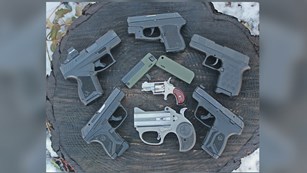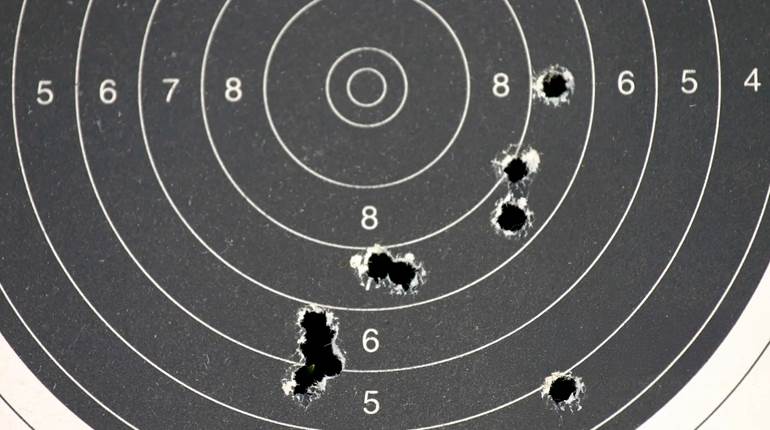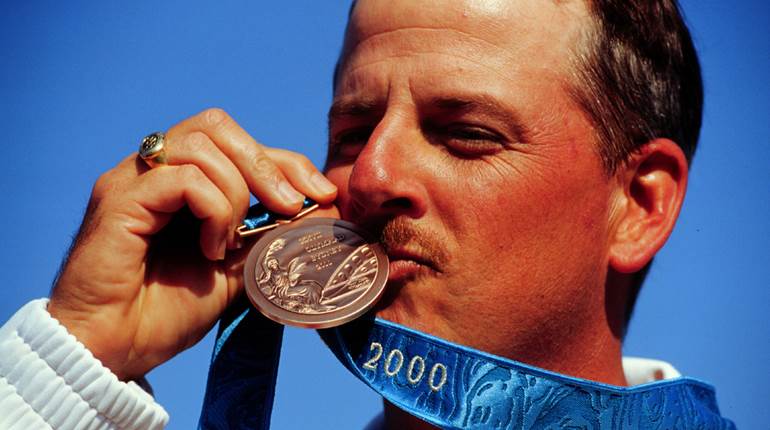
The 3rd Marine Division in Viet Nam, according to reports, is utilizing snipers to keep the enemy outside effective range of Marine infantrymen. A total of 92 marksmen are being employed, with 20 attached to each of the division's 4 regiments and 12 with the division's reconnaissance unit. They use bolt-action rifles which are equipped with telescopes. The Marine officer in charge of the sniper project states,
"Combat experience has indicated a requirement for the employment of sniper teams to deny the enemy movement through the area of operation. The Viet Cong have been effective against us, and now we are going to deny to them the capability of getting so close to us."
In action, each sniper team will be deployed about 300 yards in front of the infantry unit's defense perimeter.
This action on the part of our fighting men in Viet Nam brings back memories of lessons learned in previous conflicts. In all of our wars, there has been a crying need for skilled marksmen.
"To be prepared for War is one of the most effectual means of preserving peace."
General George Washington, while President of the United States following the Revolutionary War, maintained that "To be prepared for War is one of the most effectual means of preserving peace." It was his belief that every citizen who enjoys the protection of a free government owes a portion of his property and of his personal service to the defense of that government. He was America's first exponent of a peace establishment consisting of a small regular force and a citizen army to be "provided with uniform Arms and so far accustomed to the use of them, that the Total strength of the Country might be called forth at a Short Notice on any very interesting Emergency."
General John J. Pershing, as Commander-in-Chief of the American Expeditionary Forces in World War I, sent a cable to the War Department stating, in part,
"Strongly renew my previous recommendation that all troops be given complete course in rifle practice .... Specialties of trench warfare instruction at home should not be allowed to interfere with rifle practice or with intensive preliminary training in our schools of soldier, company and battalion."
General John R. Hodge, Chief of Army Field Forces during the Korean conflict, said,
"In the early days of the Korean fighting, one outstanding lesson was learned-every man must be trained to fight as an infantryman first, then to perform as a specialist in his respective branch. There were, and are today, in Korea daily instances where men in all units of the combat zone have been called upon to defend their positions against infiltration and guerrilla attacks. . . . Repeated incidents in World War II also pointed out the value of infantry training for all soldiers. On many occasions, men other than infantrymen were called upon to fight on the front lines when infantrymen were not available."
General Lyman L. Lemnitzer, only a few years ago while Chairman of the Joint Chiefs of Staff, stated,
"In any type of military operations, one thing that has not changed is the importance of the soldier's mastery of his individual weapons, fundamentally the rifle. In fact, this importance has increased. One of the basic requirements of modern warfare is the greatly increased dispersion of units. In order to minimize the effectiveness of the enemy's firepower, our units will be dispersed over a much larger area than ever before. As a result, they will have to be more completely self-sustained and their members will be called upon to exercise an even higher degree of individual self -reliance."
"In any type of military operations, one thing that has not changed is the importance of the soldier's mastery of his individual weapons, fundamentally the rifle.Each of these high-ranking military leaders, based on combat experiences of his times, was expressing a basic tenet of the National Rifle Association of America since it was organized in 1871. Marksmanship training is vital to individual preparedness for combat.
A prepared citizenry, trained to do a soldier's job with a soldier's skill when necessity calls, is essential to a strong America. The rifle is still the fundamental arm of our fighting forces. In the final analysis, man is the ultimate weapon in combat and the rifle is the intimate companion of the fighting man whose life must depend upon it and his ability to use it. Marksmanship training is extremely important to men of draft age, at this particular time, because of the need for skilled marksmen in Viet Nam.






































